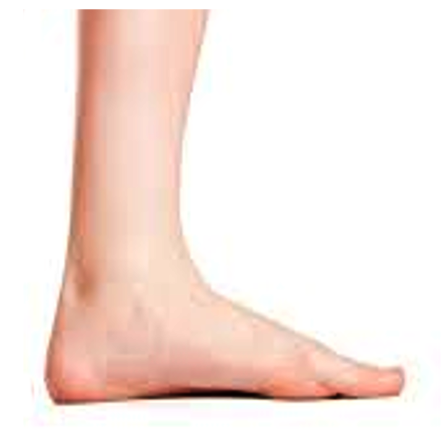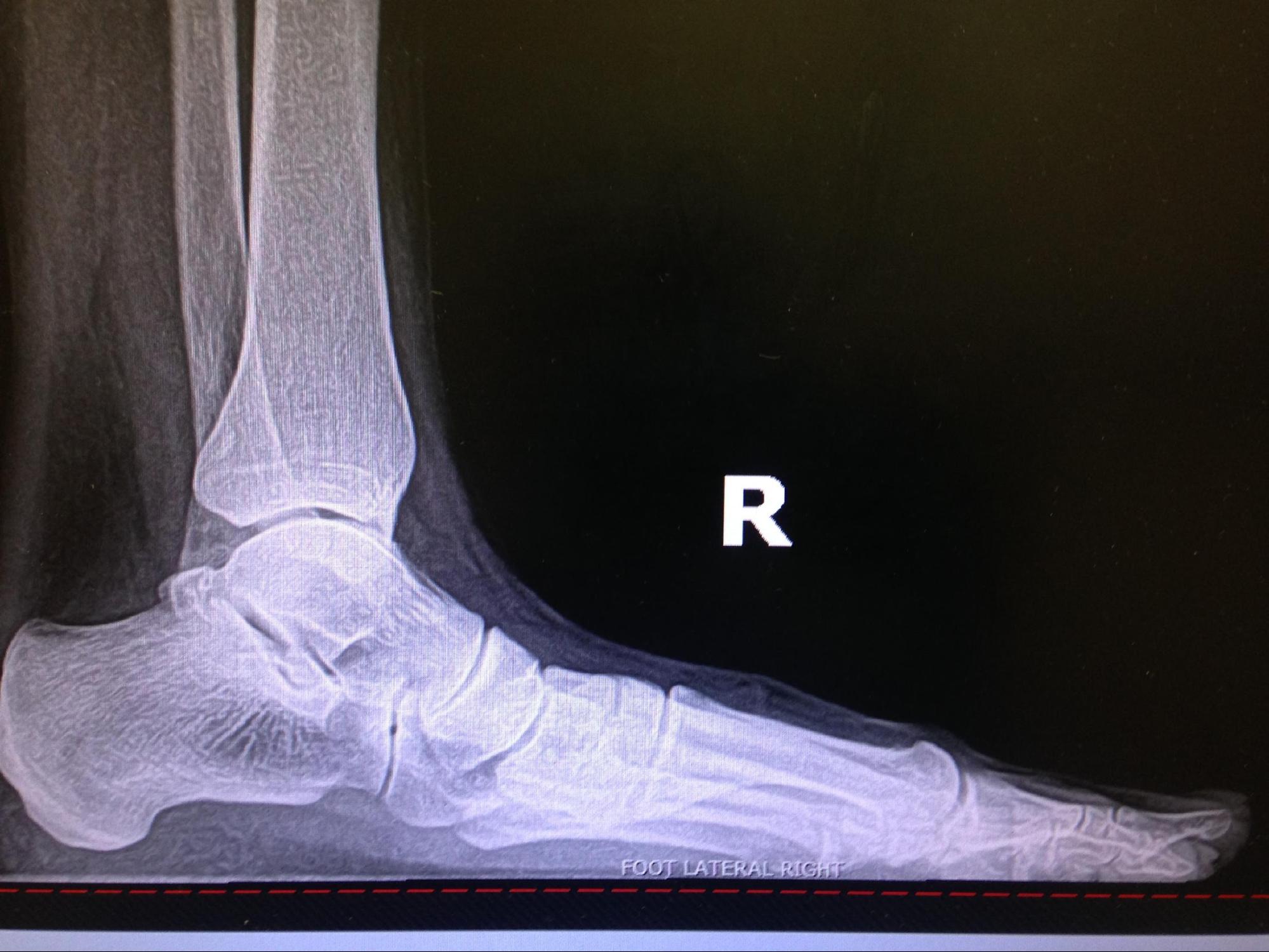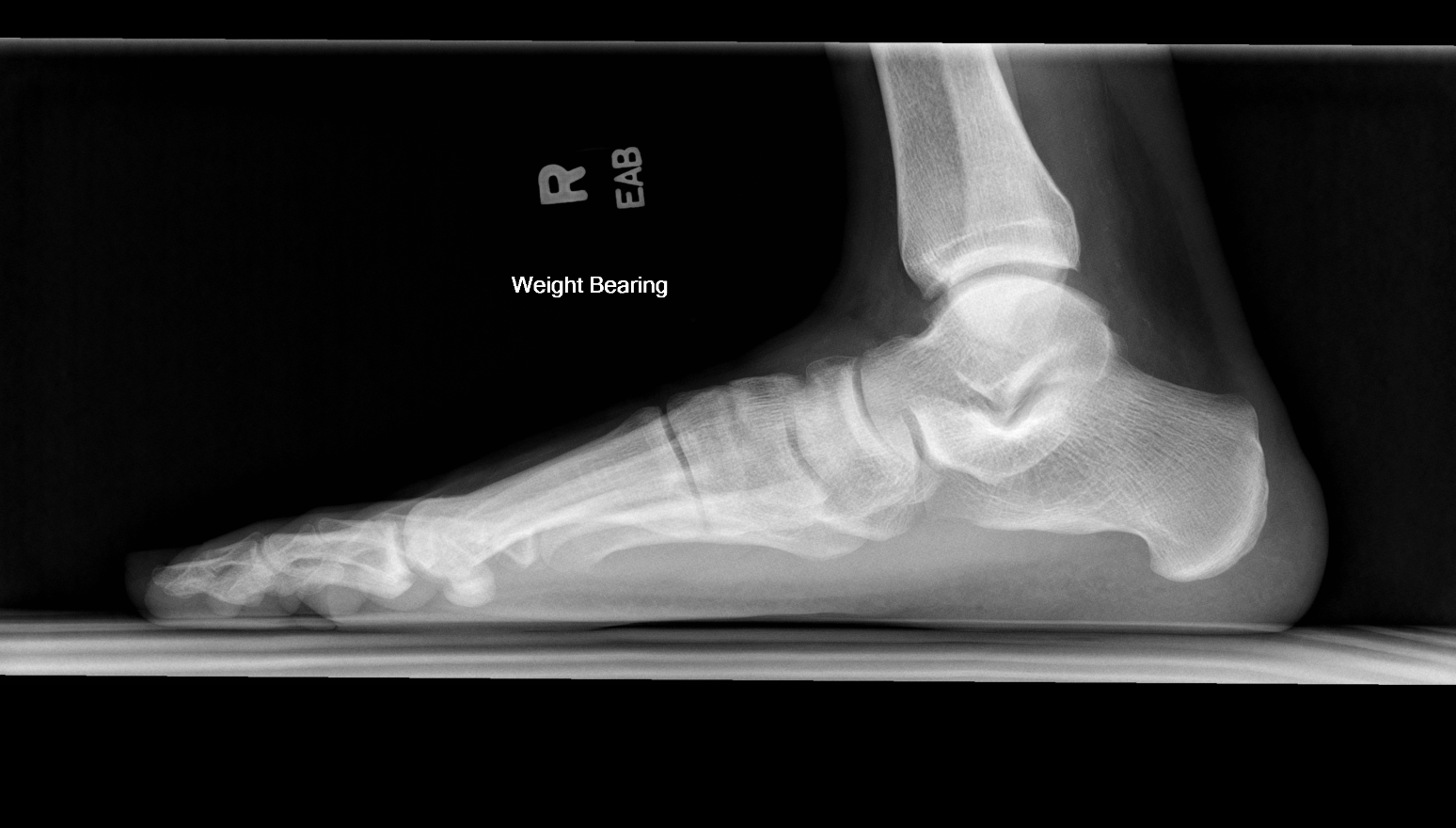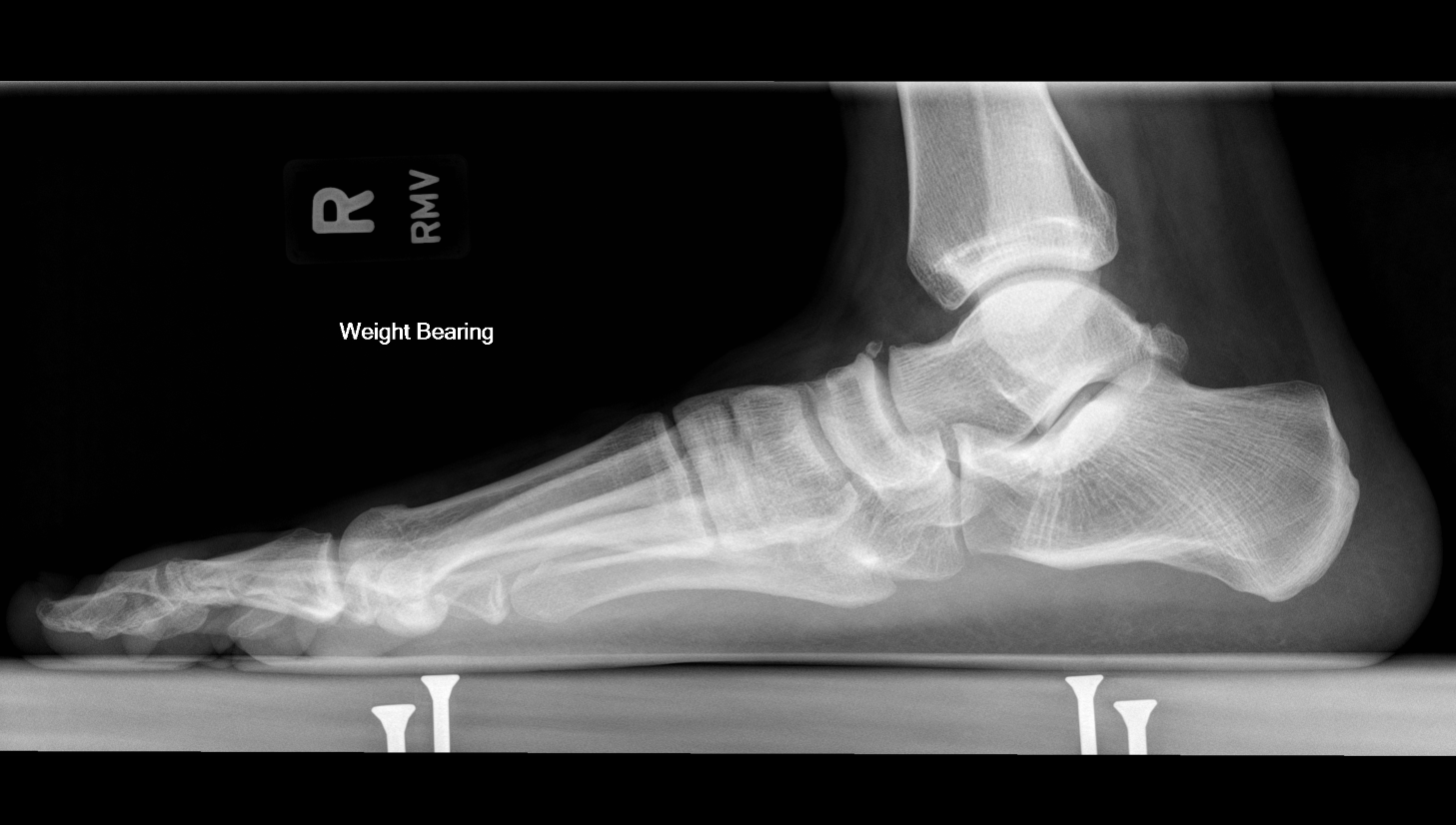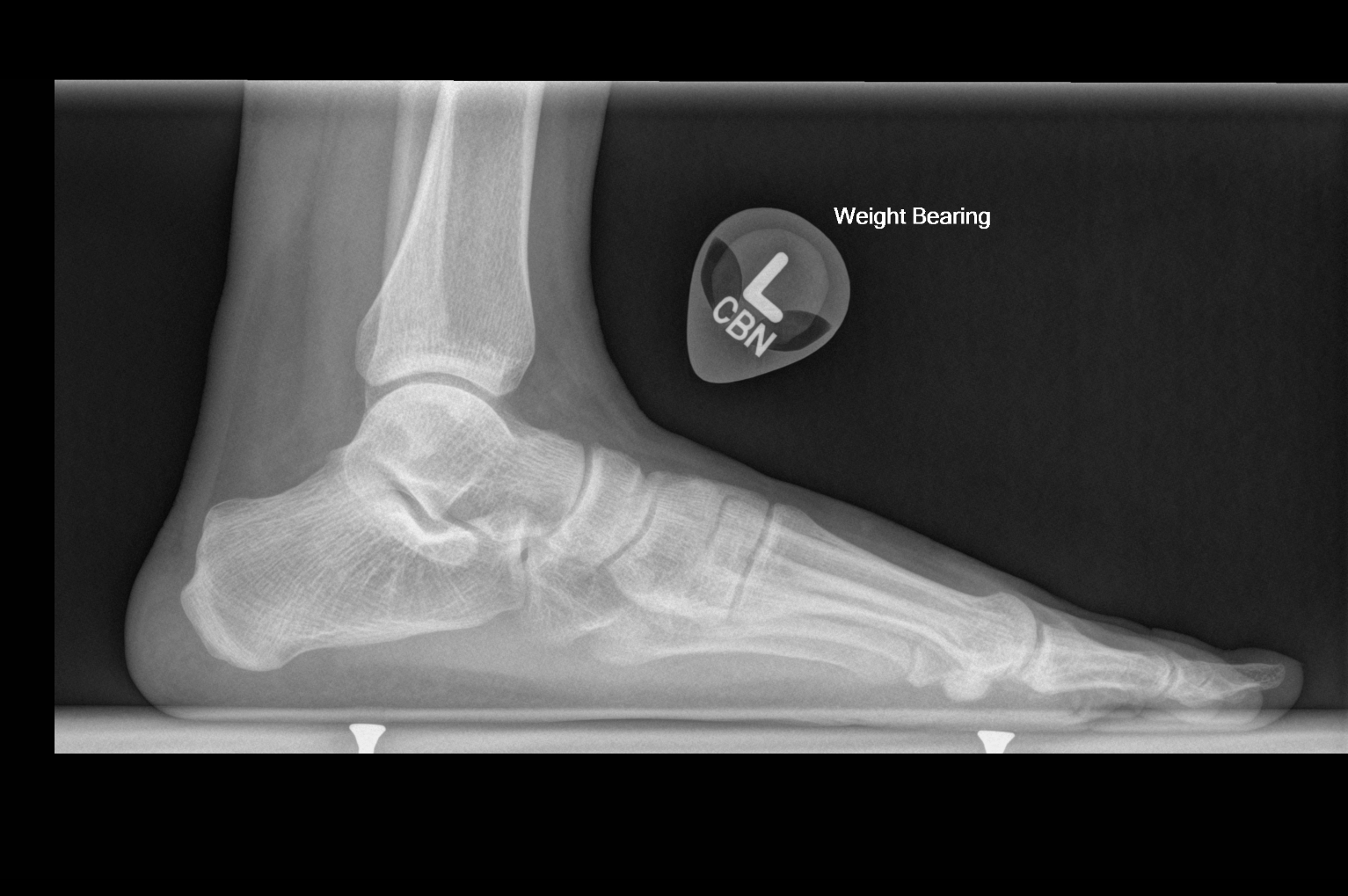[1]
Michaudet C, Edenfield KM, Nicolette GW, Carek PJ. Foot and Ankle Conditions: Pes Planus. FP essentials. 2018 Feb:465():18-23
[PubMed PMID: 29381041]
[2]
Kitaoka HB, Ahn TK, Luo ZP, An KN. Stability of the arch of the foot. Foot & ankle international. 1997 Oct:18(10):644-8
[PubMed PMID: 9347302]
[3]
Franco AH. Pes cavus and pes planus. Analyses and treatment. Physical therapy. 1987 May:67(5):688-94
[PubMed PMID: 3575426]
[4]
Kelly LA, Cresswell AG, Farris DJ. The energetic behaviour of the human foot across a range of running speeds. Scientific reports. 2018 Jul 12:8(1):10576. doi: 10.1038/s41598-018-28946-1. Epub 2018 Jul 12
[PubMed PMID: 30002498]
[5]
Aenumulapalli A, Kulkarni MM, Gandotra AR. Prevalence of Flexible Flat Foot in Adults: A Cross-sectional Study. Journal of clinical and diagnostic research : JCDR. 2017 Jun:11(6):AC17-AC20. doi: 10.7860/JCDR/2017/26566.10059. Epub 2017 Jun 1
[PubMed PMID: 28764143]
Level 2 (mid-level) evidence
[6]
Halabchi F, Mazaheri R, Mirshahi M, Abbasian L. Pediatric flexible flatfoot; clinical aspects and algorithmic approach. Iranian journal of pediatrics. 2013 Jun:23(3):247-60
[PubMed PMID: 23795246]
[7]
Nemeth B. The diagnosis and management of common childhood orthopedic disorders. Current problems in pediatric and adolescent health care. 2011 Jan:41(1):2-28. doi: 10.1016/j.cppeds.2010.10.004. Epub
[PubMed PMID: 21195338]
[8]
Mickle KJ, Steele JR, Munro BJ. The feet of overweight and obese young children: are they flat or fat? Obesity (Silver Spring, Md.). 2006 Nov:14(11):1949-53
[PubMed PMID: 17135610]
[9]
Woźniacka R, Bac A, Matusik S, Szczygieł E, Ciszek E. Body weight and the medial longitudinal foot arch: high-arched foot, a hidden problem? European journal of pediatrics. 2013 May:172(5):683-91. doi: 10.1007/s00431-013-1943-5. Epub 2013 Jan 30
[PubMed PMID: 23361963]
[10]
Bubra PS, Keighley G, Rateesh S, Carmody D. Posterior tibial tendon dysfunction: an overlooked cause of foot deformity. Journal of family medicine and primary care. 2015 Jan-Mar:4(1):26-9. doi: 10.4103/2249-4863.152245. Epub
[PubMed PMID: 25810985]
[11]
Kohls-Gatzoulis J, Woods B, Angel JC, Singh D. The prevalence of symptomatic posterior tibialis tendon dysfunction in women over the age of 40 in England. Foot and ankle surgery : official journal of the European Society of Foot and Ankle Surgeons. 2009:15(2):75-81. doi: 10.1016/j.fas.2008.08.003. Epub 2008 Oct 1
[PubMed PMID: 19410173]
[12]
Ross JA. Posterior tibial tendon dysfunction in the athlete. Clinics in podiatric medicine and surgery. 1997 Jul:14(3):479-88
[PubMed PMID: 9257035]
[13]
Gajendran VK, Yoo BJ, Hunter JC. Unusual Variant of the Nutcracker Fracture of the Calcaneus and Tarsal Navicular. Radiology case reports. 2008:3(3):208. doi: 10.2484/rcr.v3i3.208. Epub 2015 Nov 6
[PubMed PMID: 27303549]
Level 3 (low-level) evidence
[14]
Penner MJ. Late reconstruction after navicular fracture. Foot and ankle clinics. 2006 Mar:11(1):105-19, ix
[PubMed PMID: 16564456]
[15]
Park SY, Bang HS, Park DJ. Potential for foot dysfunction and plantar fasciitis according to the shape of the foot arch in young adults. Journal of exercise rehabilitation. 2018 Jun:14(3):497-502. doi: 10.12965/jer.1836172.086. Epub 2018 Jun 30
[PubMed PMID: 30018939]
[16]
Shuen V, Prem H. Acquired unilateral pes planus in a child caused by a ruptured plantar calcaneonavicular (spring) ligament. Journal of pediatric orthopedics. Part B. 2009 May:18(3):129-30. doi: 10.1097/BPB.0b013e32832b07ca. Epub
[PubMed PMID: 19373112]
[17]
Schade VL, Andersen CA. A literature-based guide to the conservative and surgical management of the acute Charcot foot and ankle. Diabetic foot & ankle. 2015:6():26627. doi: 10.3402/dfa.v6.26627. Epub 2015 Mar 19
[PubMed PMID: 25795102]
[18]
Perotti LR, Abousamra O, Del Pilar Duque Orozco M, Rogers KJ, Sees JP, Miller F. Foot and ankle deformities in children with Down syndrome. Journal of children's orthopaedics. 2018 Jun 1:12(3):218-226. doi: 10.1302/1863-2548.12.170197. Epub
[PubMed PMID: 29951120]
[19]
Lindsey JM, Michelson JD, MacWilliams BA, Sponseller PD, Miller NH. The foot in Marfan syndrome: clinical findings and weight-distribution patterns. Journal of pediatric orthopedics. 1998 Nov-Dec:18(6):755-9
[PubMed PMID: 9821131]
[20]
Shirley ED, Demaio M, Bodurtha J. Ehlers-danlos syndrome in orthopaedics: etiology, diagnosis, and treatment implications. Sports health. 2012 Sep:4(5):394-403
[PubMed PMID: 23016112]
[21]
Ojukwu CP, Anyanwu EG, Nwafor GG. Correlation between Foot Arch Index and the Intensity of Foot, Knee, and Lower Back Pain among Pregnant Women in a South-Eastern Nigerian Community. Medical principles and practice : international journal of the Kuwait University, Health Science Centre. 2017:26(5):480-484. doi: 10.1159/000481622. Epub 2017 Sep 19
[PubMed PMID: 28934734]
[22]
Myerson M, Solomon G, Shereff M. Posterior tibial tendon dysfunction: its association with seronegative inflammatory disease. Foot & ankle. 1989 Apr:9(5):219-25
[PubMed PMID: 2731833]
Level 3 (low-level) evidence
[23]
Cass AD, Camasta CA. A review of tarsal coalition and pes planovalgus: clinical examination, diagnostic imaging, and surgical planning. The Journal of foot and ankle surgery : official publication of the American College of Foot and Ankle Surgeons. 2010 May-Jun:49(3):274-93. doi: 10.1053/j.jfas.2010.02.003. Epub 2010 Mar 30
[PubMed PMID: 20356770]
[24]
Munro BJ, Steele JR. Foot-care awareness. A survey of persons aged 65 years and older. Journal of the American Podiatric Medical Association. 1998 May:88(5):242-8
[PubMed PMID: 9610049]
Level 3 (low-level) evidence
[25]
Otsuka R, Yatsuya H, Miura Y, Murata C, Tamakoshi K, Oshiro K, Nishio N, Ishikawa M, Zhang HM, Shiozawa M, Kobayashi A, Ito M, Hori Y, Kondo T, Toyoshima H. [Association of flatfoot with pain, fatigue and obesity in Japanese over sixties]. [Nihon koshu eisei zasshi] Japanese journal of public health. 2003 Oct:50(10):988-98
[PubMed PMID: 14639960]
[26]
Lauterbach S, Kostev K, Becker R. Characteristics of diabetic patients visiting a podiatry practice in Germany. Journal of wound care. 2010 Apr:19(4):140, 142, 144 passim
[PubMed PMID: 20379125]
[27]
Dunn JE, Link CL, Felson DT, Crincoli MG, Keysor JJ, McKinlay JB. Prevalence of foot and ankle conditions in a multiethnic community sample of older adults. American journal of epidemiology. 2004 Mar 1:159(5):491-8
[PubMed PMID: 14977645]
[28]
Pita-Fernandez S, Gonzalez-Martin C, Alonso-Tajes F, Seoane-Pillado T, Pertega-Diaz S, Perez-Garcia S, Seijo-Bestilleiro R, Balboa-Barreiro V. Flat Foot in a Random Population and its Impact on Quality of Life and Functionality. Journal of clinical and diagnostic research : JCDR. 2017 Apr:11(4):LC22-LC27. doi: 10.7860/JCDR/2017/24362.9697. Epub 2017 Apr 1
[PubMed PMID: 28571173]
Level 2 (mid-level) evidence
[29]
Kido M, Ikoma K, Imai K, Tokunaga D, Inoue N, Kubo T. Load response of the medial longitudinal arch in patients with flatfoot deformity: in vivo 3D study. Clinical biomechanics (Bristol, Avon). 2013 Jun:28(5):568-73. doi: 10.1016/j.clinbiomech.2013.04.004. Epub 2013 May 2
[PubMed PMID: 23643289]
[30]
Van Boerum DH, Sangeorzan BJ. Biomechanics and pathophysiology of flat foot. Foot and ankle clinics. 2003 Sep:8(3):419-30
[PubMed PMID: 14560896]
[31]
Erol K, Karahan AY, Kerimoğlu Ü, Ordahan B, Tekin L, Şahin M, Kaydok E. An important cause of pes planus: the posterior tibial tendon dysfunction. Clinics and practice. 2015 Jan 28:5(1):699. doi: 10.4081/cp.2015.699. Epub 2015 Feb 5
[PubMed PMID: 25918629]
[32]
Alazzawi S, Sukeik M, King D, Vemulapalli K. Foot and ankle history and clinical examination: A guide to everyday practice. World journal of orthopedics. 2017 Jan 18:8(1):21-29. doi: 10.5312/wjo.v8.i1.21. Epub 2017 Jan 18
[PubMed PMID: 28144575]
[34]
Kohls-Gatzoulis J, Angel JC, Singh D, Haddad F, Livingstone J, Berry G. Tibialis posterior dysfunction: a common and treatable cause of adult acquired flatfoot. BMJ (Clinical research ed.). 2004 Dec 4:329(7478):1328-33
[PubMed PMID: 15576744]
[35]
Rodriguez N, Choung DJ, Dobbs MB. Rigid pediatric pes planovalgus: conservative and surgical treatment options. Clinics in podiatric medicine and surgery. 2010 Jan:27(1):79-92. doi: 10.1016/j.cpm.2009.08.004. Epub
[PubMed PMID: 19963171]
[36]
Vulcano E, Deland JT, Ellis SJ. Approach and treatment of the adult acquired flatfoot deformity. Current reviews in musculoskeletal medicine. 2013 Dec:6(4):294-303. doi: 10.1007/s12178-013-9173-z. Epub
[PubMed PMID: 23765382]
[37]
Needleman RL. Current topic review: subtalar arthroereisis for the correction of flexible flatfoot. Foot & ankle international. 2005 Apr:26(4):336-46
[PubMed PMID: 15829219]

